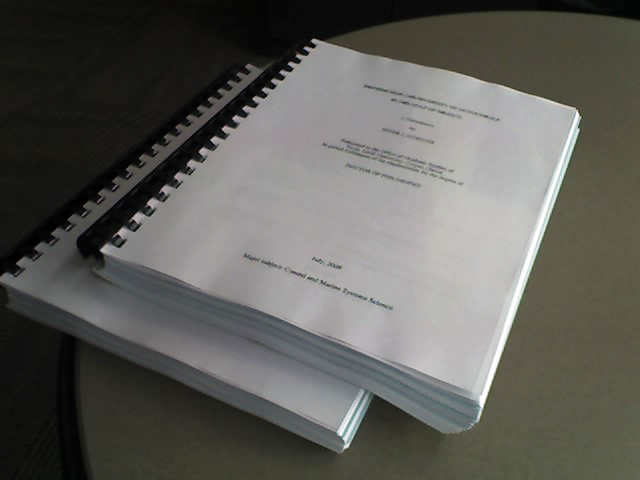Constructon dissertation guide part 3 - Research strategy
This is part of a series of Construction Dissertation Guides for students. Click here for the whole series.
After collating relevant material and deciding on a focus for the analysis, the next stage is to design an appropriate research strategy, that is, the way in which the research objectives can be questioned.
Very broadly, there are two types of research strategies available – ‘quantitative’ and ‘qualitative’.
Contents |
[edit] Quantitative
Quantitative research is an objective measure of definable factual evidence such as numbers and statistics that are capable of being analysed to determine the validity of a hypothesis.
Quantitative research can be used deductively to test a theory that can be presented in one of two ways:
- A hypothetical statement such as ‘if x then y’.
- An educated ‘guess’.
Data accumulated through the research process should help to prove or disprove the hypothesis.
[edit] Qualitative
Qualitative research is a more subjective measure of descriptions, views, opinions, and alternative theories. Depending on the approach taken, the research may use a smaller sample than quantitative research, but the data obtained can be more personal and in-depth. The relationship between the theory and the research is emergent or developing.
Broadly, the two categories of qualitative research are exploratory and attitudinal:
- Exploratory research is used primarily to gain a greater understanding of a particular subject. It is useful for diagnosing a situation, considering alternative ideas and discovering new ones that haven’t been previously considered. The most common method of exploratory research is interviewing, where the raw data will be the transcribed answers. Another common method is a questionnaire (usually with open-ended questions).
- Attitudinal research is used to evaluate the opinions or views of individuals in a way that is subjective. Examples are questions that ask the individual to express their level of agreement with a statement, or to rank preferences.
[edit] Data collection strategies
[edit] Primary data collection
The main approaches to primary data collection are:
[edit] Surveys
Used to gather data from a large sample size within a defined time frame. Surveys can be descriptive, asking what?, where?, when?, and so on, or analytical, establishing the relationship between attributes of the survey.
[edit] Case studies
A small number of specific example analysed as a means of supporting the overall argument. Conclusions drawn will be related to the particular case studies and may not be easily generalised to the rest of the industry.
[edit] Problem-solving / experimentation
This is a more action-based option, where certain changes are introduced/proposed and the impacts observed and analysed. This may for example involve experimentation. Particular skills, and sometimes equipment can be required for problem-solving research and so it is not always suited to the time and resource restrictions of a dissertation project.
[edit] Secondary data collection
The data (statistical and/or descriptive) is sourced and accumulated from others rather than being obtained first-hand. It can be used to substantiate or clarify points being made by the researcher. This can be more efficient an approach in terms of time and cost, and can also assist in terms of useful comparisons between data collected via the primary methods. However, it may be more difficult to develop independent conclusions, and may not demonstrate to examiners that the researcher has the ability to accumulate primary data.
[edit] Statistical
These can be found in libraries and online, such as those conducted and published by leading institutions including RIBA, RTPI, BRE, CIOB, RIBA, CIRIA, ICE, IStructE, CIBSE and so on. See Construction industry institutes and associations for more information.
[edit] Descriptive
This is similar to analysing content during the literature review. With an eye on how relevant, factually accurate and reliable it is.
[edit] Check your approach
It is very important at this stage that you discuss your approach with your supervisor to ensure it is suitable before proceeding with the actual research.
Continue to the next stage: Questionnaires and interviews.
Featured articles and news
Infrastructure that connect the physical and digital domains.
Harnessing robotics and AI in challenging environments
The key to nuclear decommissioning and fusion engineering.
BSRIA announces Lisa Ashworth as new CEO
Tasked with furthering BSRIA’s impressive growth ambitions.
Public buildings get half a million energy efficiency boost
£557 million to switch to cleaner heating and save on energy.
CIOB launches pre-election manifesto
Outlining potential future policies for the next government.
Grenfell Tower Inquiry announcement
Phase 2 hearings come to a close and the final report due in September.
Progress from Parts L, F and O: A whitepaper, one year on.
A replicated study to understand the opinion of practitioners.
ECA announces new president 2024
Electrical engineer and business leader Stuart Smith.
A distinct type of countryside that should be celebrated.
Should Part O be extended to existing buildings?
EAC brands heatwave adaptation a missed opportunity.
Definition of Statutory in workplace and facilities management
Established by IWFM, BESA, CIBSE and BSRIA.
Tackling the transition from traditional heating systems
59% lack the necessary information and confidence to switch.
The general election and the construction industry
As PM, Rishi Sunak announces July 4 date for an election.
Eco apprenticeships continue help grow green workforce
A year after being recognised at the King's coronation.
Permitted development rights for agricultural buildings
The changes coming into effect as of May 21, 2024.






















